BEET PROTECTION FROM PESTS AND DISEASES
Fighting rots roots, soil pests (wireworms, sugar beet cyst nematode) ensured preventive measures: site selection, precursor variety, type and quality of soil treatment.
Cons of soil and leaf (fleas, matte carrion, fly beet, the early appearance of aphids) pests and pests of seedlings – seeds treated with insecticides.
If you exceed the threshold of harmfulness against pests spend processing insecticides during the growing season of plants included in the “State Register of plant protection products (pesticides) and fertilizers permitted for use on the territory of the Republic of Moldova.” Upon reaching the harmfulness threshold for controlling leaf diseases are used fungicides, included in the “State Register of plant protection products (pesticides) and fertilizers permitted for use on the territory of the Republic of Moldova.”
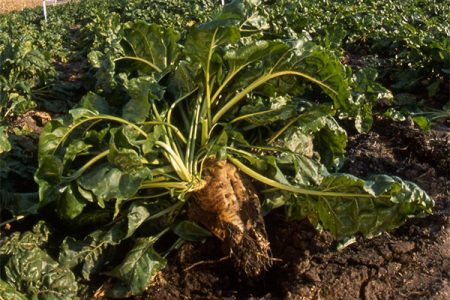
Crop diseases
Cercosporosis manifests itself in the form of small (2-3 mm), round, light brown spots with a red or reddish-brown border. In the process of aging the grow spots. Often the center of the old stain is perforated. In very severe cases, the lower tier of the leaves die off. Young leaves are almost not infected. On the regrowth of new leaves consumed the accumulated sugar (sugar content could be reduced by 2%), and this leads to an increase in the head of root crop. Today, almost everywhere cercospora blight is the main culprit of the major losses of sugar beet harvest. Every year, the disease kills up to 40% or more of the gross harvest of root crops. Moreover, when beet growers held a high-tillage and fertilizer made and used high-yield seeds, and spent a lot of money to protect the plants, is annoyed suffer significant crop losses, already established in the field.
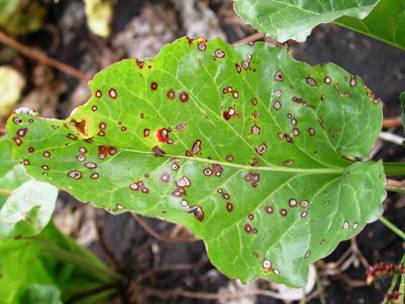

Powdery mildew. The disease affects all organs of the plant above ground as a white plaque. First touch gentle, arachnoid, then quickly grows into a white, thick, and powdering. Affected plant parts take the form, as it were sprinkled with flour. The disease leads to a decrease in root yield by 10-30% sugar content of 0.5-1.5%, the premature death of leaves, and poor keeping quality during storage.
Phoma rot. On leaves appear rounded, pale brown spots. A characteristic feature of is the presence of other spotted them concentric zones, gradually grow and merge with each other. On roots, the pathogen is causing dry rot.
Alternaria blight manifests itself on the old and the outer leaves first outlet in the form of mobile. It begins with damage to leaf margins, extending to the middle. Sometimes it manifests itself in the form of brown spots during the growing season (late July – August). In severe cases, the spots coalesce to form extensive necrotic area. This pathogen is the causative agent as seed infection, Black Leg, Clamp Rot. The disease manifests itself strongly in the end of the growing season in continuous rainy weather.
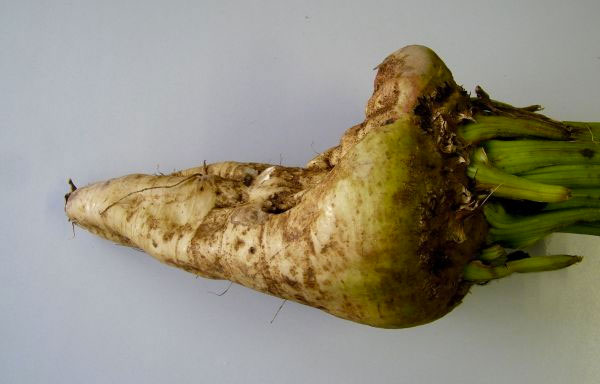
Vermins
Beet flea main harm caused in the period from germination to the formation of beet and 2-3 pairs of true leaves. These insects gnaw almost all leaf tissue, it does not touch the epidermis, which dries and cracks. With this defeat is a delay in the growth of plants, and sometimes even total loss.
Beet leaf beetle causes the most damage to the appearance of the first – the second pair of leaves. It feeds on the flesh of the cotyledons and leaves, in which holes are formed irregularly shaped, heavily damaged, leaves are similar to lace.
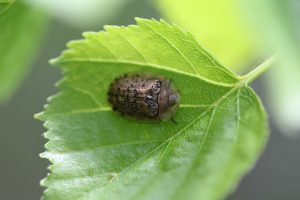
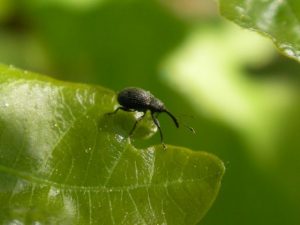
Beet weevils. The main period of severity – from germination to the appearance of one – two pairs of true leaves. Harm overwintered beetles gnaw young beet plants. In cold weather, they can eat the sprouts before they appear on the surface of the soil, in warm devour fork, leaving a stump. The larvae devour the small lateral roots, and the third of the fourth age gnaw sores in the roots.
Wireworms. Larvae of different species of click beetles eat away barely sprouted glomeruli, gnaw roots youthful plants, as well as doing a moves in the roots, which negatively affects the storage of beet.
Matt burying beetles. The larvae eat away the leaves, the damage looks like a round hole. Beetles devour point growth and cotyledon leaves, resulting sheet is cut. The most exposed is considered the first pair of leaves and cotyledons. The larvae eat away the leaves, the damage looks like a round hole. Beetles devour point growth and cotyledon leaves, resulting sheet is cut. The most exposed is considered the first pair of leaves and cotyledons.
Leafhoppers. The larvae and adult insects suck the sap from the leaves, seeds, and they like embryos. As a result – reduced seed germination. Favorite place leafhoppers – areas with a lot of weeds and crops condensed.
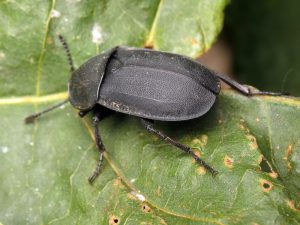

Cutworms. Harms caterpillar, which gnaws stems located near the ground and the roots, which arise because of the cavity of the pest. Striking are the plants throughout the growing season. Leaves skeletonize are destroyed. Harmfulness peak is on the dry hot weather.
Beet leaf aphid migrates to beet in the late spring or early summer. As a result, the leaves are deformed or twisted. Located on the testes, aphid colonizes the tops of the stems. At considerable damages crops and sugar content reduced significantly worsens the quality of seed.
At the same topic see also:
